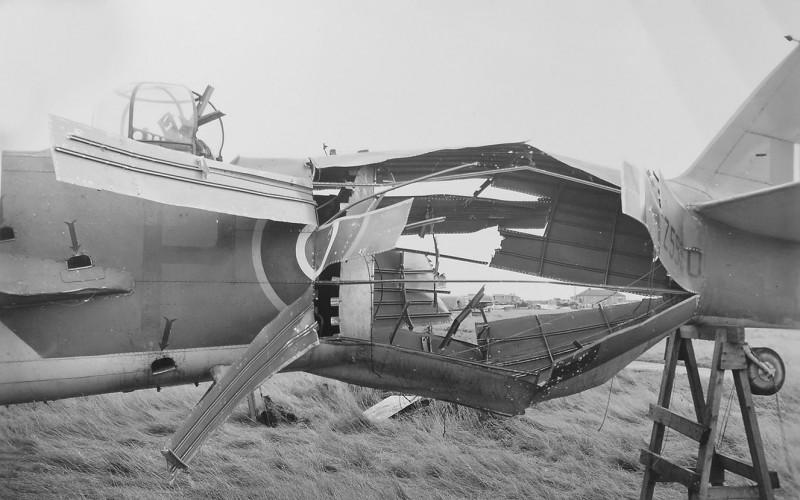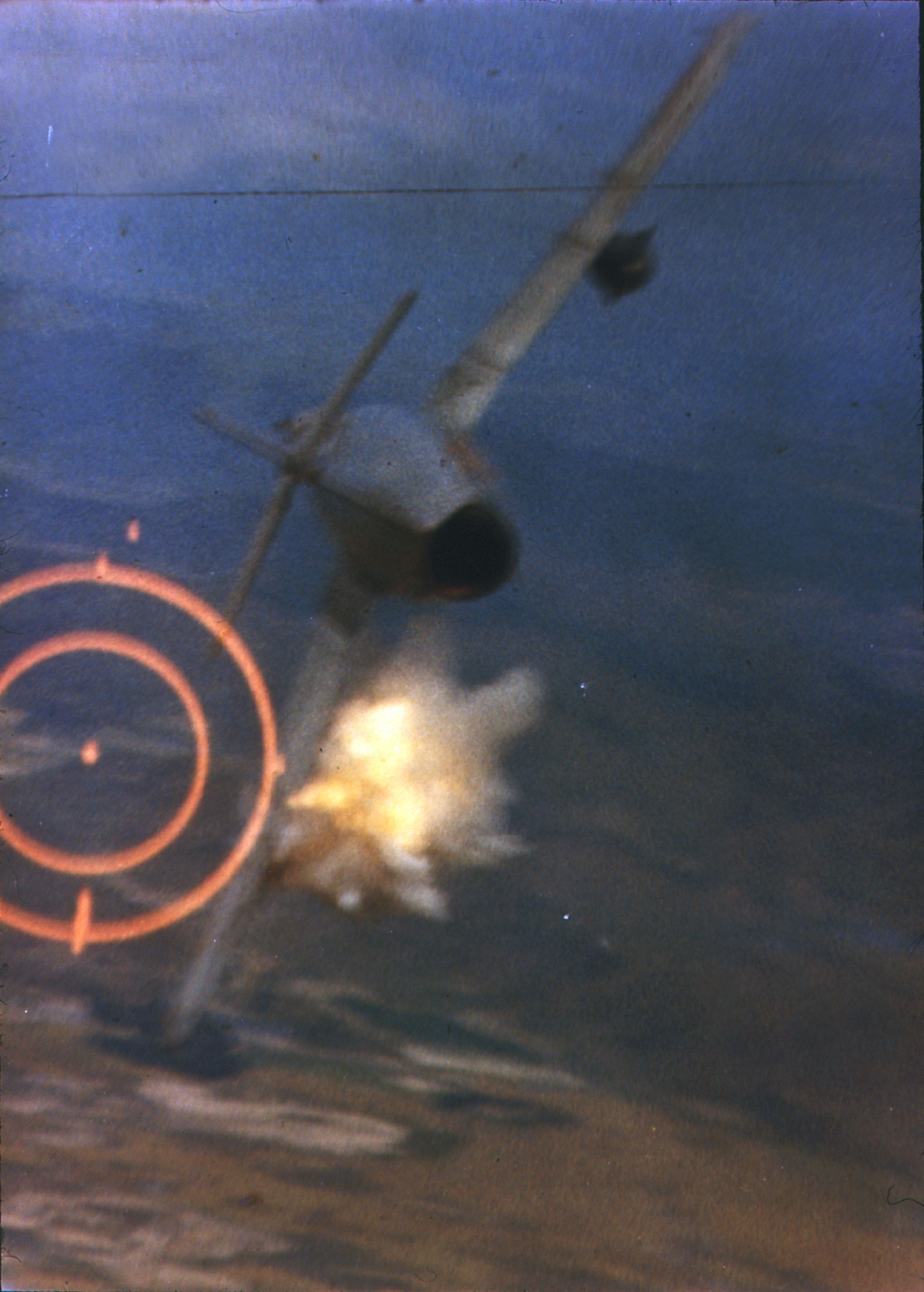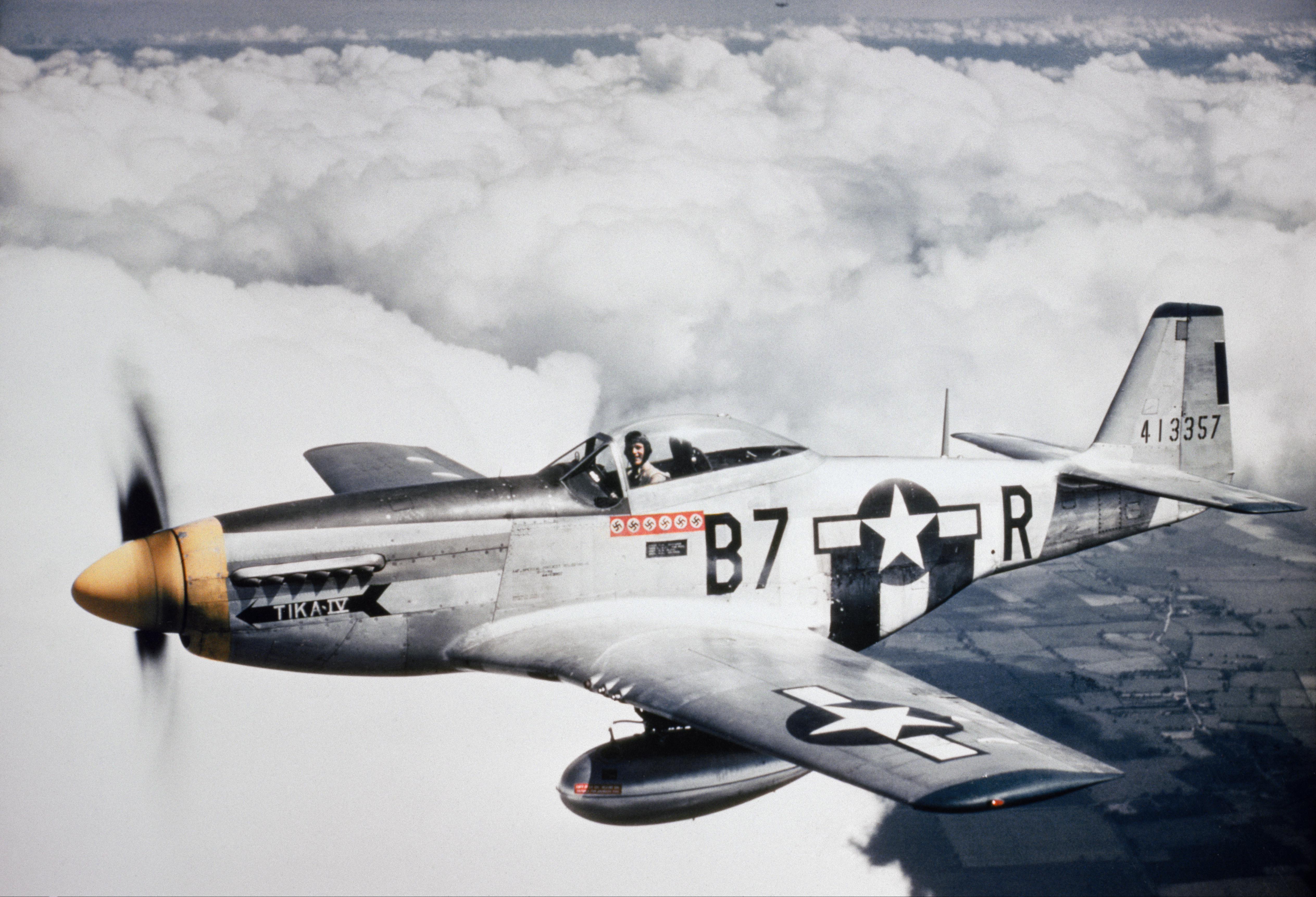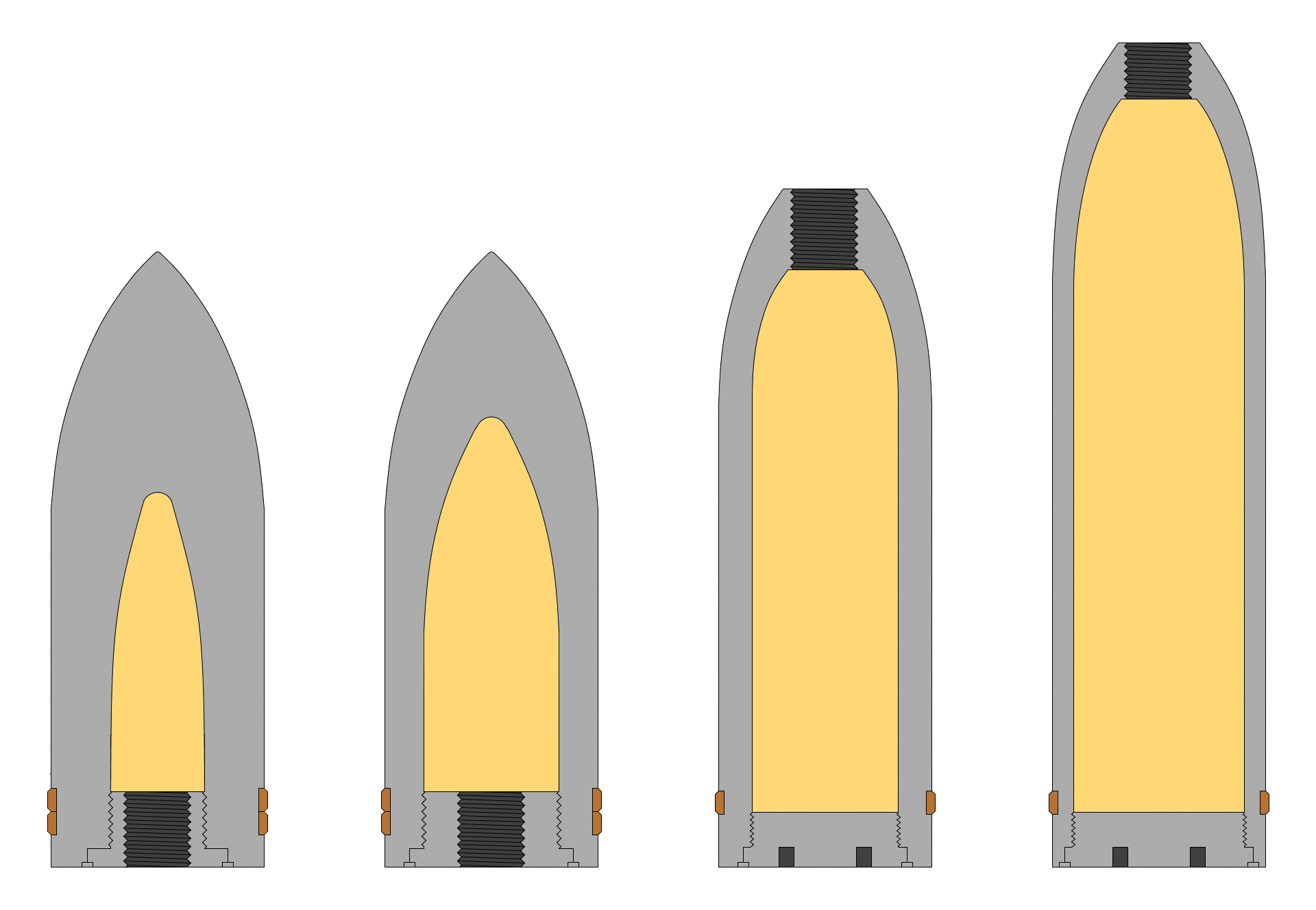|
30 Mm ADEN
The Royal Small Arms Factory ADEN cannon (ADEN being an acronym for "Armament Development, Enfield") is a 30 mm revolver cannon used on many military aircraft, particularly those of the British Royal Air Force and Fleet Air Arm. Developed post-World War II primarily to meet British Air Ministry's requirement for increased lethality in aircraft armament, the cannon was fired electrically and is fully automatic once it is loaded. Design and development During World War II, the German firm Mauser began development of a radically new 20 mm autocannon using a motorised firing mechanism in order to improve the rate of fire. The weapon got the preliminary designation Mauser MG 213 and by the late-war period the design was beginning to mature. However the presence of large heavy bombers like the Boeing B-17 Flying Fortress and Avro Lancaster led to the need of up-arming ''Luftwaffe'' fighter aircraft with heavier cannons. Mauser responded to this by adapting the MaschinenGewe ... [...More Info...] [...Related Items...] OR: [Wikipedia] [Google] [Baidu] |
Imperial War Museum Duxford
Imperial War Museum Duxford is a branch of the Imperial War Museum near Duxford in Cambridgeshire, England. Britain's largest aviation museum, Duxford houses the museum's large exhibits, including nearly 200 aircraft, military vehicles, artillery and minor naval vessels in seven main exhibition buildings.For a list of aircraft, vehicles and boats at Duxford, see The site also provides storage space for the museum's other collections of material such as film, photographs, documents, books and artefacts. The site accommodates several British Army regimental museums, including those of the Parachute Regiment (named '' Airborne Assault'') and the Royal Anglian Regiment. Based on the historic Duxford Aerodrome, the site was originally operated by the Royal Air Force (RAF) during the First World War. During the Second World War Duxford played a prominent role during the Battle of Britain and was later used by United States Army Air Forces fighter units in support of the daylight ... [...More Info...] [...Related Items...] OR: [Wikipedia] [Google] [Baidu] |
Mauser MG 213
The Mauser MG 213 was a 20 mm aircraft-mounted revolver cannon developed for the ''Luftwaffe'' during World War II. It was never put into service, but the principles formed the basis for several post-war developments by the Allies. A 30 mm version was developed as the MG 213C or MK 213 and it was this that led to the British ADEN, French DEFA and American M39 cannon. Operation The gun was developed by Mauser but, as far as known, was never deployed. It was developed from an earlier design: the MG 213A. The MG 213A utilized a gas-driven operation. In the MG 213, the direct movement of the revolver cassette was changed to a diagonal cam with a follower. This actuated a rammer that both fed cartridges into the cylinders and revolved the cassette. Sealing was accomplished by packing the cylinder and breech with heat resistant steel. This innovation allowed chamber movement while the gas pressure was very high. The revolver cassette had five chambers and at least 3 chambers were fu ... [...More Info...] [...Related Items...] OR: [Wikipedia] [Google] [Baidu] |
Dogfight
A dogfight, or dog fight, is an aerial battle between fighter aircraft conducted at close range. Dogfighting first occurred in Mexico in 1913, shortly after the invention of the airplane. Until at least 1992, it was a component in every major war, though with steadily declining frequency. Since then, longer-range weapons have made dogfighting largely obsolete. Modern terminology for air-to-air combat is air combat maneuvering (ACM), which refers to tactical situations requiring the use of individual basic fighter maneuvers (BFM) to attack or evade one or more opponents. This differs from aerial warfare, which deals with the strategy involved in planning and executing various missions. Etymology The term ''dogfight'' has been used for centuries to describe a melee: a fierce, fast-paced close quarters battle between two or more opponents. The term gained popularity during World War II, although its origin in air combat can be traced to the latter years of World War I. One of ... [...More Info...] [...Related Items...] OR: [Wikipedia] [Google] [Baidu] |
Hispano-Suiza HS
Hispano-Suiza () is a Spanish automotive–engineering company. It was founded in 1904 by Marc Birkigt and Damian Mateu as an automobile manufacturer and eventually had several factories in Spain and France that produced luxury cars, aircraft engines, trucks and weapons. In 1923, its French luxury car arm became a semi-autonomous partnership with the Spanish parent company. In 1946, the Spanish parent company sold all of its Spanish automotive assets to Enasa, a Spanish state-owned vehicle manufacturer, and the French arm continued as an independent aviation engine and components manufacturer under the Hispano-Suiza name. In 1968, Hispano-Suiza was taken over by the aerospace company Snecma, which is now part of the French Safran, Safran Group. An attempt to relaunch the marque was made by the company Hispano Suiza Cars associated with the Peralada Group (owned by the Suqué Mateu family) in 2019 with a fully-electric car. History Early years In 1898, a Spanish artillery captain, ... [...More Info...] [...Related Items...] OR: [Wikipedia] [Google] [Baidu] |
GIAT
Nexter Systems (formerly known as GIAT Industries or ''Groupement des Industries de l'Armée de Terre'', Army Industries Group) is a French government-owned weapons manufacturer, based in Roanne, Loire. Group organization The Nexter group is divided in several smaller entities, with the main one being Nexter Systems. The sub-companies are: * Nexter Munitions * Nexter Mechanics * Nexter Electronics * Nexter Robotics * Nexter Training * OptSys * NBC Sys * Euro-Shelter * Mecar * Simmel Difesa History The GIAT group was founded in 1973 by combining the industrial assets of the technical direction of Army weapons of the French Ministry of Defense. The company was nationalized in 1991. On 22 September 2006 GIAT became the core of the new company Nexter. For many years GIAT struggled to turn a profit. The company was operated at a loss. A 2001 report by the ''Cour des Comptes'' and a 2002 report by the National Assembly described the situation as critical. In April 2004 the boar ... [...More Info...] [...Related Items...] OR: [Wikipedia] [Google] [Baidu] |
Armament Development Establishment
Fort Halstead was a research site of Dstl, an executive agency of the UK Ministry of Defence. It is situated on the crest of the Kentish North Downs, overlooking the town of Sevenoaks, southeast of London. Originally constructed in 1892 as part of a ring of fortresses around London, Fort Halstead was to be staffed by volunteers in the event of a crisis. The base became home to the Projectile Development Establishment, the Ministry of Supply and later was the headquarters of the Royal Armament Research and Development Establishment (RARDE). Design and construction Fort Halstead formed a part of the London Defence Positions, a scheme devised by Lieutenant General Sir Edward Bruce Hamley and implemented by the Secretary of State for War, Edward Stanhope, who announced the plan to Parliament in 1889. The scheme envisaged a line of entrenchments which would be dug in the event of war to protect the southern and eastern approaches to the capital. Supporting these were to be thirt ... [...More Info...] [...Related Items...] OR: [Wikipedia] [Google] [Baidu] |
Combined Bomber Offensive
The Combined Bomber Offensive (CBO) was an Allies of World War II, Allied offensive of strategic bombing during World War II, strategic bombing during World War II in Europe. The primary portion of the CBO was directed against Luftwaffe targets which was the highest priority from June 1943 to 1 April 1944. The subsequent highest priority campaigns were against V-weapon installations (June 1944) and Oil Campaign chronology of World War II, petroleum, oil, and lubrication (POL) plants (September 1944). Additional CBO targets included Transportation Plan, railyards and other transportation targets, particularly prior to the invasion of Normandy and, along with army equipment, End of World War II in Europe, in the final stages of the war in Europe. The British bombing campaign was chiefly waged by night by large numbers of heavy bombers until the latter stages of the war when German fighter defences were so reduced that daylight bombing was possible without risking large losses. The ... [...More Info...] [...Related Items...] OR: [Wikipedia] [Google] [Baidu] |
Mine Shell
A mine shell (from the German term ''Minengeschoß'', "mine shot"), also known as High-Explosive, High-Capacity (HEHC) in British military nomenclature, is a military explosive shell type characterized by thin (usually steel) shell walls and a correspondingly high quantity of explosives, much higher than the traditional high explosive shell type per caliber, meaning that mine shells trade fragmentation effect (due to the thinner shell walls) for a higher pressure wave effect when comparing to traditional high explosive shells. Mine shells were originally developed during the mid to late 1800s against fortresses prior to rebar but got a new role during World War II against air targets as reinforced fortresses had made the original use of the type obsolete around World War I. Effect, construction and use The mine shell is a more explosive version of the common high-explosive and high-explosive fragmentation shells, relying on inflicting damage primarily through the blast (pressu ... [...More Info...] [...Related Items...] OR: [Wikipedia] [Google] [Baidu] |
Muzzle Velocity
Muzzle velocity is the speed of a projectile (bullet, pellet, slug, ball/shots or shell) with respect to the muzzle at the moment it leaves the end of a gun's barrel (i.e. the muzzle). Firearm muzzle velocities range from approximately to in black powder muskets, to more than in modern rifles with high-velocity cartridges such as the .220 Swift and .204 Ruger, all the way to for tank guns firing kinetic energy penetrator ammunition. To simulate orbital debris impacts on spacecraft, NASA launches projectiles through light-gas guns at speeds up to . Projectile velocity For projectiles in unpowered flight, its velocity is highest at leaving the muzzle and drops off steadily because of air resistance. Projectiles traveling less than the speed of sound (about in dry air at sea level) are ''subsonic'', while those traveling faster are ''supersonic'' and thus can travel a substantial distance and even hit a target before a nearby observer hears the "bang" of the shot. Projec ... [...More Info...] [...Related Items...] OR: [Wikipedia] [Google] [Baidu] |
Propellant
A propellant (or propellent) is a mass that is expelled or expanded in such a way as to create a thrust or other motive force in accordance with Newton's third law of motion, and "propel" a vehicle, projectile, or fluid payload. In vehicles, the engine that expels the propellant is called a reaction engine. Although technically a propellant is the reaction mass used to create thrust, the term "propellant" is often used to describe a substance which is contains both the reaction mass and the fuel that holds the energy used to accelerate the reaction mass. For example, the term "propellant" is often used in chemical rocket design to describe a combined fuel/propellant, although the propellants should not be confused with the fuel that is used by an engine to produce the energy that expels the propellant. Even though the byproducts of substances used as fuel are also often used as a reaction mass to create the thrust, such as with a chemical rocket engine, propellant and fuel are two ... [...More Info...] [...Related Items...] OR: [Wikipedia] [Google] [Baidu] |
Nomenclature
Nomenclature (, ) is a system of names or terms, or the rules for forming these terms in a particular field of arts or sciences. The principles of naming vary from the relatively informal naming conventions, conventions of everyday speech to the internationally agreed principles, rules and recommendations that govern the formation and use of the specialist terms used in scientific and any other disciplines. Naming "things" is a part of general human communication using words and language: it is an aspect of everyday Taxonomy (general), taxonomy as people distinguish the objects of their experience, together with their similarities and differences, which observers Identification (information), identify, name and wikt:classification, classify. The use of names, as the many different kinds of nouns embedded in different languages, connects nomenclature to theoretical linguistics, while the way humans mentally structure the world in relation to semantics, word meanings and Experience ( ... [...More Info...] [...Related Items...] OR: [Wikipedia] [Google] [Baidu] |
MK 108 Cannon
The MK 108 (German: ''Maschinenkanone''—"machine cannon") was a 30 mm caliber autocannon manufactured in Nazi Germany, Germany during World War II by Rheinmetall‑August Borsig, Borsig for use in aircraft. The cannon saw widespread use as an anti-bomber weapon during the second half of the war, first seen in 1943 in the Messerschmitt Bf 110, Bf 110G-2 bomber destroyers and Messerschmitt Bf 109, Bf 109G-6/U4. Four MK 108's formed the main armament of the Messerschmitt Me 262, Me 262 the next year. It could be found on some versions or optional mountings on practically every other German fighter aircraft, fighter of the era. Development The weapon was developed as a private venture by the company in 1940 and was submitted to the ''Reich Air Ministry, Reichsluftfahrtministerium'' (RLM—Reich Aviation Ministry) in response to a 1942 requirement for a heavy aircraft weapon for use against the Allies of World War II, Allied heavy bombers appearing over German-controlled regions by ... [...More Info...] [...Related Items...] OR: [Wikipedia] [Google] [Baidu] |






